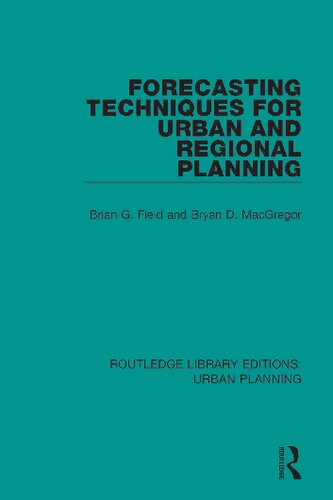

Most ebook files are in PDF format, so you can easily read them using various software such as Foxit Reader or directly on the Google Chrome browser.
Some ebook files are released by publishers in other formats such as .awz, .mobi, .epub, .fb2, etc. You may need to install specific software to read these formats on mobile/PC, such as Calibre.
Please read the tutorial at this link: https://ebookbell.com/faq
We offer FREE conversion to the popular formats you request; however, this may take some time. Therefore, right after payment, please email us, and we will try to provide the service as quickly as possible.
For some exceptional file formats or broken links (if any), please refrain from opening any disputes. Instead, email us first, and we will try to assist within a maximum of 6 hours.
EbookBell Team

5.0
18 reviewsOriginally published in 1987, Forecasting Techniques for Urban and Regional Planning is an introduction to the various analytical techniques which have been developed and applied in urban and regional analysis in planning practice. The subjects covered are population, housing, employment, transport, shopping, recreation, and integrated forecasting. Each technique, placed in the context of policy formulation and political matters, is presented both verbally and mathematically, and it separating characteristic is illustrated with detailed but simple practical examples. The techniques examined are set in a policy context and their practical limitations are identified.